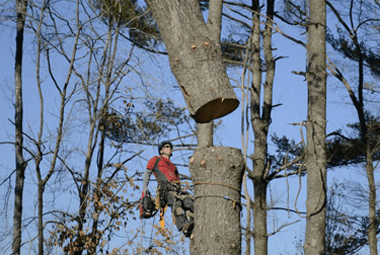With the American National Standard for pruning, ANSI A300, specifications can be written in a virtual infinite number of combinations The following information is designed to help you understand exactly what will be accomplished in a pruning operation. Branch Size — A minimum or maximum diameter size of branches to be removed should be specified in all pruning operations. This established how much pruning it to be done.
Hazard Reduction Pruning (HRP) — Is recommended when the primary objective is to reduce the danger to a specific target caused by visibly defined hazards in a tree. For example, HRP may be the primary objective if a tree has many dead limbs over a park bench.
Maintenance Pruning (MP) — Is recommended when the primary objective is to maintain or improve tree health and structure, and includes hazard reduction pruning. An example here might be to perform an MP operation on a front yard tree.
Hazard reduction pruning and maintenance pruning should consist of one or more of the pruning types noted below:
Crown cleaning — The selective removal of one or more of the following items: dead, dying or diseased branches, weak branches and watersprouts
Crown thinning — The selective removal of branches to increase light penetration, air movement and to reduce weight
Crown raising — The removal of the lower branches to provide clearance
Crown reduction or shaping — Decrease the height and/or spread of a tree. Consideration should be given to the ability of the species to sustain this type of pruning
Vista pruning — The selective thinning of framework limbs or specific areas of the crown to allow a view of an object from predetermined spot
Crown restoration — Should improve the structure, form and appearance of trees which have been severely headed, vandalized or storm damaged.

